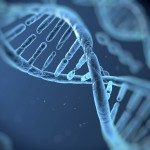Lien vers Pubmed [PMID] – 18849963
Nature 2008 Nov;456(7219):255-8
Although the cochlea is an amplifier and a remarkably sensitive and finely tuned detector of sounds, it also produces conspicuous mechanical and electrical waveform distortions. These distortions reflect nonlinear mechanical interactions within the cochlea. By allowing one tone to suppress another (masking effect), they contribute to speech intelligibility. Tones can also combine to produce sounds with frequencies not present in the acoustic stimulus. These sounds compose the otoacoustic emissions that are extensively used to screen hearing in newborns. Because both cochlear amplification and distortion originate from the outer hair cells-one of the two types of sensory receptor cells-it has been speculated that they stem from a common mechanism. Here we show that the nonlinearity underlying cochlear waveform distortions relies on the presence of stereocilin, a protein defective in a recessive form of human deafness. Stereocilin was detected in association with horizontal top connectors, lateral links that join adjacent stereocilia within the outer hair cell’s hair bundle. These links were absent in stereocilin-null mutant mice, which became progressively deaf. At the onset of hearing, however, their cochlear sensitivity and frequency tuning were almost normal, although masking was much reduced and both acoustic and electrical waveform distortions were completely lacking. From this unique functional situation, we conclude that the main source of cochlear waveform distortions is a deflection-dependent hair bundle stiffness resulting from constraints imposed by the horizontal top connectors, and not from the intrinsic nonlinear behaviour of the mechanoelectrical transducer channel.

